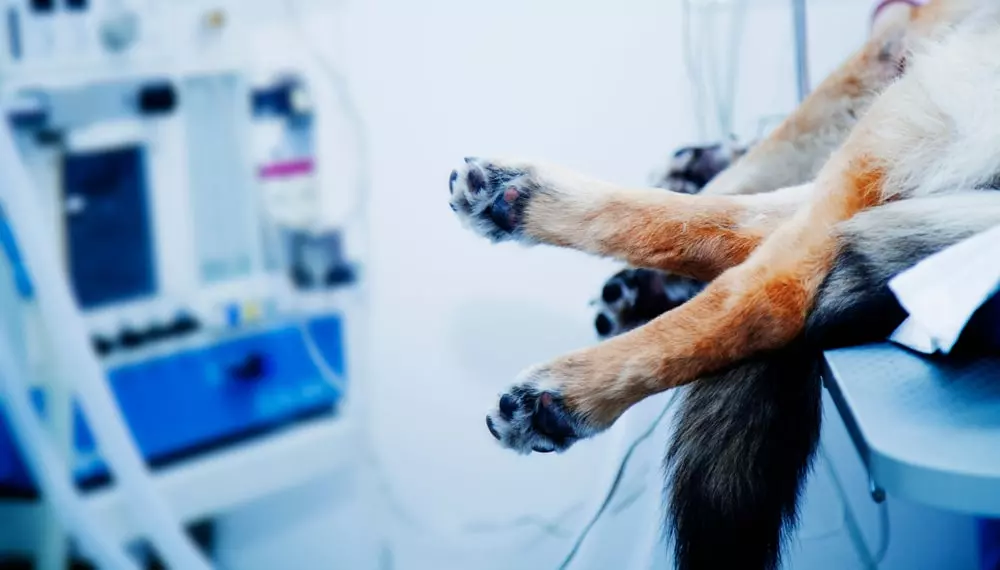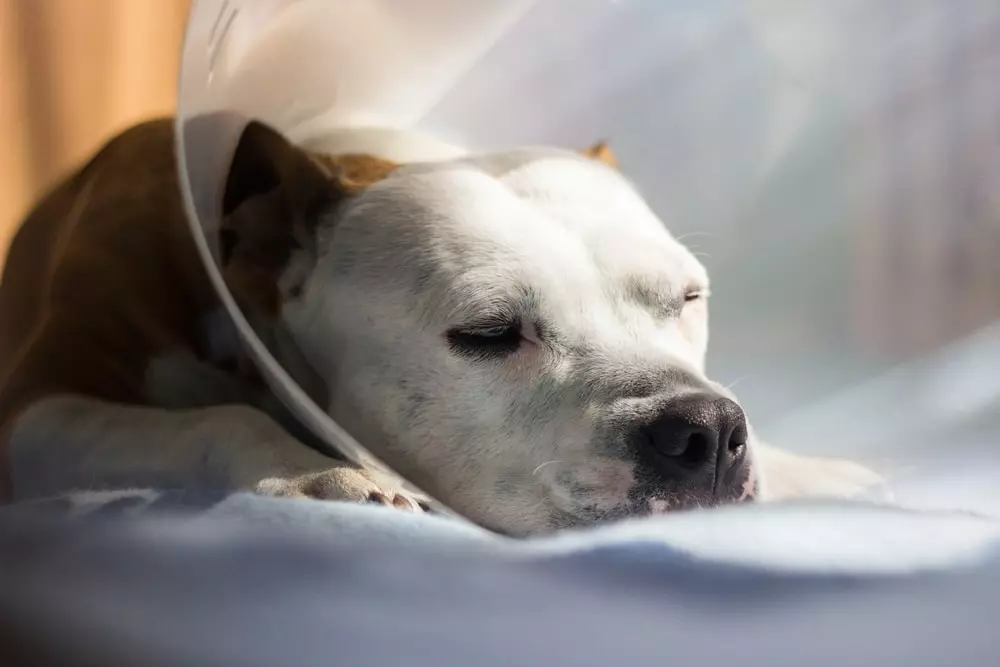PET HEALTH
Anesthesia procedures can seem intimidating, especially if your dog has never needed anesthesia before. To help you feel more confident in getting your pup the necessary care, read on for the different types of dog anesthesia and when they’re used, potential risks and side effects, what to expect during a procedure, and what it may cost you.
What Is Dog Anesthesia?
Anesthesia is a method of administering certain drugs that keep your pet asleep so they don’t feel pain and will remain still during medical procedures.1
Anesthesia isn’t just used for major surgeries. It can be a routine practice and is typically performed safely every day. Vets may use anesthesia for a lot of different reasons, including:2
- Teeth cleanings
- MRIs and X-rays
- Surgeries
- Major wound treatment
- Spaying or neutering
- Emergency situations
Need Anesthesia To Help With Your Dog’s Diagnosis or Treatment?
Types of Dog Anesthesia
The type of anesthesia your dog may need depends on the procedure. Depending on the circumstances, your dog may receive general or local (aka regional) anesthesia. They may also be sedated. Take a closer look at each.
General anesthesia
When general anesthesia is used, your pet is made unconscious for a specific amount of time. They can’t feel any pain and their muscles are relaxed.1 This type of anesthesia is given to your pet through intravenous (IV) injection, breathing in anesthetic gas, or a combination.2
Local anesthesia
If a specific area on your dog’s body needs numbing so they can’t feel pain, a local anesthetic is used.1 It may also be combined with sedative medications during some procedures to help keep pets calm.3
Sedation
For procedures that require dogs to be sleepy and still, but not entirely unconscious, vets may use sedative medications. Sedation can be helpful for diagnostic tests or imaging, especially if dogs have anxiety.3 It may also be given before general anesthesia to help dogs relax.2
Risks of Anesthesia in Dogs
Anesthesia deaths are rare in dogs, but it’s important to know the risks involved. Here are some factors that can affect your dog’s risk of anesthesia complications:1,2,3,4
- Age: Senior dogs and puppies may be at a higher risk of experiencing complications.
- Breed: Certain breeds may be predisposed to cardiac or breathing issues — such as greyhounds, brachycephalic breeds, and cavalier King Charles spaniels.
- Medical history: If your dog has had adverse reactions to anesthesia before, it could increase their risk of complications again. Some medications and supplements can also adversely react with anesthesia.
- Health issues: Dogs with certain health conditions — like organ diseases — can have an increased risk of anesthesia complications.
- Improper fasting: Dogs are supposed to fast for a time prior to scheduled anesthesia. Improper fasting could cause food in the stomach to be vomited into the lungs during the procedure, causing aspiration.
While certain factors can predispose your dog to anesthesia complications, there are also inherent health risks for all dogs who undergo anesthesia, including:1,2,3,4
- Organ system failure
- Seizures
- Visual impairment
- Clotting disorders
- Allergic or adverse reactions to medications
- Low blood pressure
- Incorrect dosage
- Infection
- Temporary or permanent paralysis
- Inability to urinate
But remember: Vets weigh the benefits of your dog going under anesthesia with the risks to help ensure your pet’s safety.2 Be sure to ask them questions about safety precautions, what to expect after the procedure, and what you should do at home. Also, watch your pet closely for signs of complications while following your vet’s care instructions.
Potential Side Effects of Anesthesia in Dogs
Dogs who have been under anesthesia typically recover from the drugs around 12 – 24 hours after the procedure.1 Some side effects of anesthesia in dogs can include:1,2
- Shivering
- Sleepiness or grogginess
- Vocalization (whining or barking)
- Mild vomiting
If your pet remains lethargic or acts unlike themselves for longer than the suggested recovery time, it’s recommended to consult your vet.1
What To Expect When Your Dog Gets Anesthesia
Let’s demystify the process of anesthesia by walking through what it usually looks like at a vet’s office.
Before anesthesia
Your vet will likely ask you about your dog's normal routine, medical history, current medications, or any concerns you have. All this information is added to their records, along with the results from their physical exam and blood tests, and helps the vet form a procedure plan unique to your pet.4
Before the procedure, your vet will instruct you on how your dog should fast from food. On the day of their procedure, your pet may be given a sedative so they can relax prior to receiving anesthesia. Vets then place IVs, catheters, and other wires to monitor your pet’s vitals and administer anesthesia.4
During anesthesia
The anesthesiologist might insert an endotracheal tube down your pet’s windpipe to deliver oxygen and anesthetic gas. There are safety precautions taken to make sure the tube stays in place.2,4
Medications given by IV are typically a dosage of pain and blood circulation medications, and can include injectable anesthesia to make sure your pet is as comfortable as possible.2,4
The anesthesiologist will observe your dog’s blood pressure, body temperature, pain levels, oxygen levels, and heart rate. They may also use warming blankets to help prevent hypothermia.2,4
After anesthesia
Vets ensure your dog’s vitals return to normal and are stable before removing any IVs, the endotracheal tube, or monitoring equipment. Your pet will likely be moved to a quiet environment for additional monitoring while they recover.4
You can bring your dog home once the vet confirms they’re awake, alert, comfortable, and warm. This could be the same day or after a short hospital stay, depending on the procedure. You’ll be sent home with aftercare instructions and any medications your dog needs.2,4
How Much Does Dog Anesthesia Cost?
The cost of anesthesia for dogs varies considerably, with a range of $90 – $1,200 or more.5 Usually, anesthesia fees are part of an itemized bill for the entire procedure. Get a quote ahead of time so you can budget accordingly.
Factors that influence the cost of anesthesia are your dog's size, breed, and how long the procedure is. Your vet may charge by weight or by time spent during the procedure. Like all veterinary costs, dog anesthesia costs can depend on where you live and which vet you go to — a vet in a city could charge more than one in rural areas.5 Fortunately, pet insurance can help cover anesthesia fees.
When English bulldog puppy, Chloe, fractured her leg, she needed to be put under anesthesia to fix it. The cost of the anesthesia was lumped into her procedure, which was over $2,600. Thanks to her family’s MetLife Pet policy, they were reimbursed over $2,400.6
MetLife Pet Insurance Could Help You Save on Anesthesia Costs
Anesthesia helps keep your dog calm and pain-free during certain procedures. But the cost can easily tip a budget-friendly bill into a financial pickle. Make caring for your pup the priority and lessen worries about costs by getting a MetLife Pet policy. We can reimburse you for up to 90% of covered expenses related to surgeries and procedures that require anesthesia.7
Enroll your dog today for coverage on accidents that could happen tomorrow with our 0-day waiting period.8 Start by getting your free, personalized quote now.


